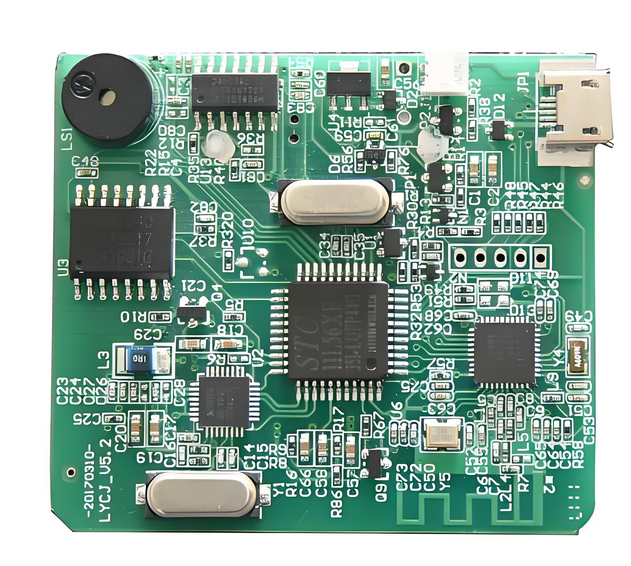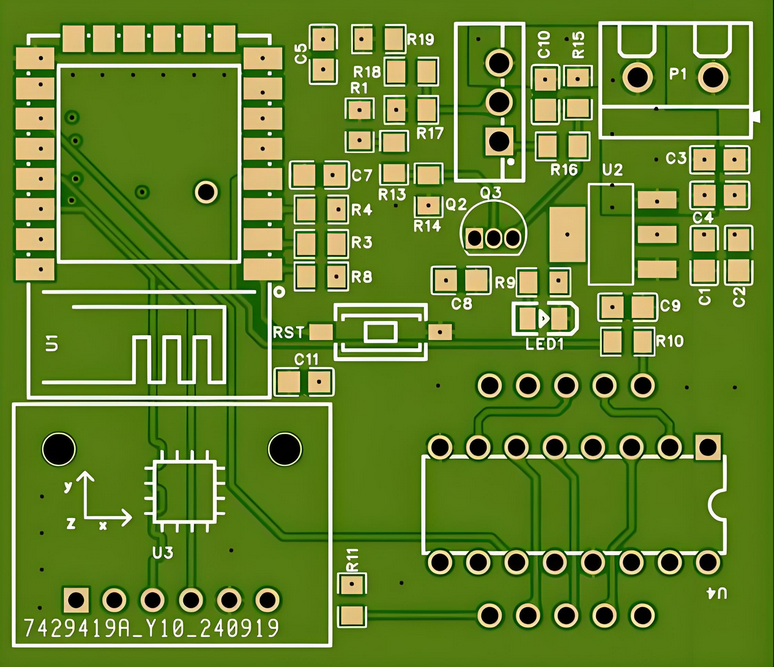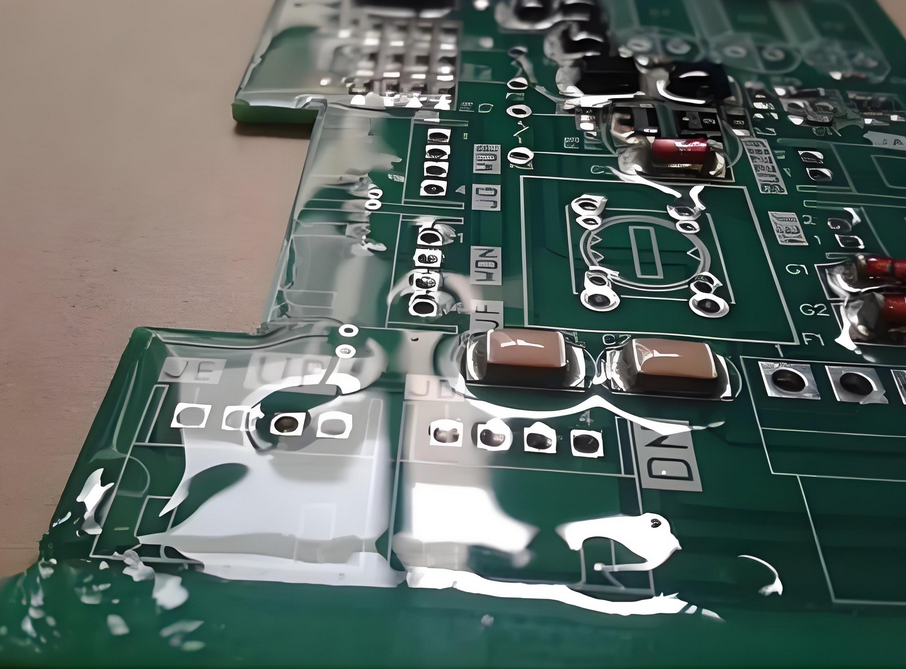In the rapidly evolving automotive industry, Electronic Control Units (ECUs) are at the heart of vehicle performance, safety, and efficiency. As vehicles become smarter and more connected, the design of ECU Printed Circuit Boards (PCBs) must keep pace with cutting-edge technologies. So, what does the future hold for ECU PCB design? This blog dives into the latest trends and innovations shaping advanced automotive PCB technology, next-generation ECU designs, and the broader landscape of automotive PCBs. From miniaturization to high-speed signal processing, we’ll explore the key developments engineers and manufacturers need to watch.
Why ECU PCB Design Matters in Modern Vehicles
ECUs are the brains behind critical automotive systems like engine control, braking, and advanced driver-assistance systems (ADAS). The PCB within an ECU is responsible for connecting and powering the components that make these systems work. As vehicles integrate more complex features—think autonomous driving and electric powertrains—the demand for innovative ECU PCB designs grows. Future trends in ECU PCB design focus on meeting these challenges with improved performance, reliability, and efficiency.
In this post, we’ll break down the most important advancements in automotive PCB technology, offering insights into how they impact engine control units and the automotive industry as a whole. Whether you’re an engineer or a manufacturer, staying ahead of these trends is essential for designing the vehicles of tomorrow.
1. Miniaturization: Shrinking Sizes Without Sacrificing Power
One of the most significant trends in ECU PCB design is miniaturization. As vehicles pack more electronics into limited spaces, PCBs must become smaller while maintaining or even boosting their performance. This is especially critical for ECUs in compact electric vehicles (EVs) or hybrid models where space is at a premium.
Modern ECU PCBs are leveraging advanced manufacturing techniques like High-Density Interconnect (HDI) to achieve smaller footprints. HDI technology allows for finer traces—sometimes as narrow as 50 micrometers—and tighter via structures, enabling more components to fit on a smaller board. This not only saves space but also reduces weight, which is a key factor in improving fuel efficiency or extending EV battery range.
Beyond HDI, the use of multi-layer PCBs is on the rise. These boards stack multiple layers of circuitry, often exceeding 10 layers in complex automotive applications. This approach supports the dense integration needed for next-generation ECU designs while ensuring signal integrity, a critical factor when dealing with high-speed data from sensors and actuators.

2. High-Speed Signal Processing for Real-Time Performance
With the rise of ADAS and autonomous driving, ECUs must process massive amounts of data in real time. This requires PCBs that can handle high-speed signals without interference or delay. Advanced automotive PCB technology is evolving to meet these demands through improved materials and design practices.
For instance, low-loss dielectric materials like PTFE (Polytetrafluoroethylene) are becoming more common in ECU PCB designs. These materials minimize signal loss at high frequencies, supporting data rates often exceeding 10 Gbps in modern automotive systems. Additionally, designers are focusing on controlled impedance, targeting values around 50 ohms for single-ended signals and 100 ohms for differential pairs, to ensure clean signal transmission.
Another innovation is the use of advanced simulation tools during the design phase. These tools analyze signal integrity and electromagnetic interference (EMI) before manufacturing, reducing costly redesigns. As vehicles rely more on real-time data for safety features like collision avoidance, high-speed signal processing will remain a cornerstone of future ECU PCB trends.

3. Thermal Management: Keeping ECUs Cool Under Pressure
Automotive environments are harsh, with ECUs often exposed to extreme temperatures ranging from -40°C to 125°C. Effective thermal management is a critical focus for next-generation ECU designs, as overheating can lead to system failures or reduced lifespan of components.
Innovations in automotive PCB technology are addressing this challenge through advanced materials and design techniques. Metal-core PCBs, for example, use a metal base layer—often aluminum—to dissipate heat more effectively than traditional FR-4 boards. These boards can reduce operating temperatures by up to 20°C in high-power applications like engine control units.
Additionally, designers are incorporating thermal vias and heat sinks directly into PCB layouts. Thermal vias, often placed near heat-generating components like power transistors, transfer heat away from critical areas. Some designs even integrate embedded copper coins—small copper inserts with thermal conductivity up to 400 W/m·K—to enhance heat dissipation.
As electric and hybrid vehicles push ECUs to manage higher power loads, thermal management will continue to be a defining factor in ECU PCB design. Staying ahead of this trend ensures reliability and safety in the most demanding conditions.
4. Enhanced Durability for Harsh Automotive Environments
Durability is non-negotiable for automotive PCBs. ECUs must withstand vibration, moisture, and chemical exposure over a vehicle’s lifespan, which can exceed 15 years. Future trends in ECU PCB design are focusing on materials and coatings that improve resilience.
Conformal coatings, such as acrylic or silicone-based layers, protect PCBs from moisture and dust. These coatings are applied with thicknesses as thin as 25 micrometers, ensuring protection without adding bulk. For extreme conditions, some manufacturers are turning to parylene coatings, which offer superior resistance to chemicals and temperature fluctuations.
Another trend is the adoption of rigid-flex PCBs. Combining rigid and flexible sections, these boards can absorb vibrations better than fully rigid designs, reducing the risk of cracks or connection failures. This is particularly valuable for ECUs mounted near engines, where vibration levels can reach 10G or more.
By prioritizing durability, designers ensure that ECUs remain reliable even in the toughest environments, a must for innovations in engine control units and broader automotive applications.

5. Integration of AI and IoT in ECU PCB Design
The integration of Artificial Intelligence (AI) and the Internet of Things (IoT) is transforming automotive systems, and ECU PCBs are no exception. AI-driven ECUs are being designed to handle predictive maintenance, optimizing engine performance by analyzing data from sensors in real time. IoT connectivity, meanwhile, enables over-the-air updates and vehicle-to-everything (V2X) communication.
To support these features, ECU PCBs must accommodate more complex circuitry and wireless communication modules. This often means integrating RF (radio frequency) components directly onto the board, requiring careful design to avoid EMI. Shielding techniques, such as grounded copper layers, are used to isolate sensitive signals, ensuring reliable performance for IoT-enabled systems.
AI and IoT also drive the need for higher component density. Surface-mount technology (SMT) allows for smaller, more efficient placement of chips and resistors, supporting the compact designs needed for smart ECUs. As these technologies advance, ECU PCBs will play a central role in enabling the connected, intelligent vehicles of the future.
6. Sustainability and Eco-Friendly Materials in Automotive PCBs
As the automotive industry shifts toward sustainability, ECU PCB design is following suit. Manufacturers are exploring eco-friendly materials and processes to reduce environmental impact. Halogen-free laminates, for instance, are gaining traction as they eliminate harmful chemicals without compromising performance.
Recycling is another focus area. Some companies are designing PCBs with modular components that can be easily disassembled and reused, reducing electronic waste. Additionally, lead-free soldering techniques, compliant with RoHS (Restriction of Hazardous Substances) standards, are now standard in automotive PCB production.
While sustainability may not directly impact ECU performance, it’s a growing priority for manufacturers aiming to meet regulatory requirements and consumer expectations. Adopting green practices in PCB design is a forward-thinking move that aligns with broader industry goals.
7. The Role of Automation and Advanced Manufacturing
The future of ECU PCB design isn’t just about the boards themselves—it’s also about how they’re made. Automation and advanced manufacturing techniques are streamlining production, reducing errors, and speeding up time-to-market for automotive PCBs.
Automated optical inspection (AOI) systems, for example, can detect defects like misaligned components or solder issues with over 99% accuracy. This ensures high-quality boards for critical applications like engine control units. Meanwhile, additive manufacturing (3D printing) is being explored for rapid prototyping of PCB layouts, cutting development cycles by weeks.
These advancements lower costs and improve consistency, which is vital as the demand for complex ECU designs grows. Staying updated on manufacturing innovations is just as important as following design trends for anyone in the automotive PCB space.
Conclusion: Preparing for the Future of ECU PCB Design
The future of ECU PCB design is bright, driven by trends like miniaturization, high-speed signal processing, thermal management, and sustainability. As vehicles become more advanced with AI, IoT, and electric powertrains, automotive PCB technology must evolve to meet new challenges. From durable materials that withstand harsh conditions to eco-friendly practices that align with industry goals, these innovations in engine control units are shaping the next generation of ECU designs.
For engineers and manufacturers, staying ahead means embracing these advancements and integrating them into every stage of design and production. By focusing on future trends in ECU PCB and advanced automotive PCB technology, you can build solutions that power the vehicles of tomorrow—solutions that are smaller, faster, cooler, and more connected than ever before.
At ALLPCB, we’re committed to supporting the automotive industry with cutting-edge PCB solutions. Whether you’re working on a groundbreaking ECU or exploring new design possibilities, we’re here to help bring your vision to life with precision and reliability.
 ALLPCB
ALLPCB







